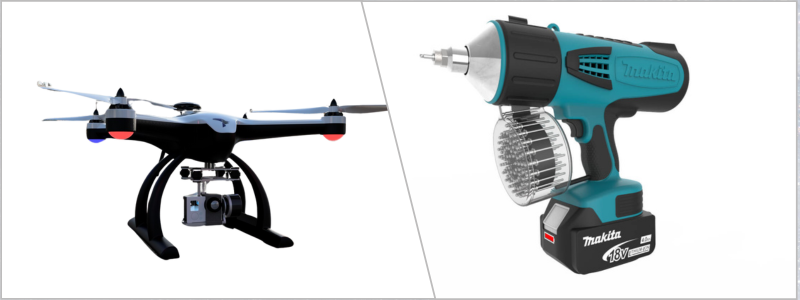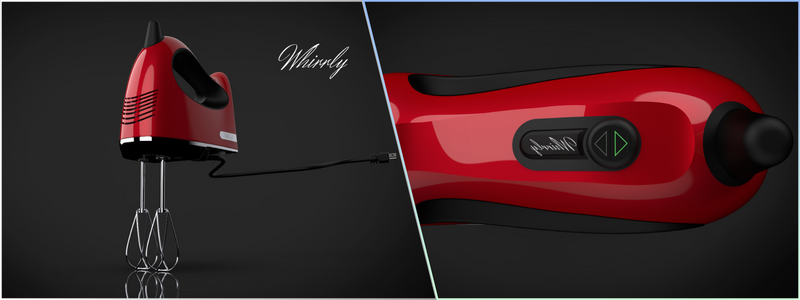With a whopping value of $13.84 billion, the additive manufacturing industry is one of this modern era’s fastest-growing manufacturing technologies. SLS, or Selective Laser Sintering, is among the breakthrough 3D printing technologies that catapulted its quick rise to popularity and paved the way to wide-scale adaptation across various industries. This article is a comprehensive guide to SLS 3D printing services for companies:
What is SLS 3D printing?
SLS 3D printing services utilize heat energy through a guided laser to sinter layers of raw material particles into a durable and robust build. Once heated, these particles don’t melt as they merge. It is known as a sintering instead of a melting process. SLS 3D printers also come in various build volumes that range from large-scale industrial to desktop.
RELATED: 3D Printing technologies for modeling and prototyping
They also differ in manufacturing accuracy, cost, laser power, and laser type, which can be CO2 lasers, diodes, fiber, or others. The technique is famous for its viability for rapid prototyping and manufacturing functional parts. The sought-after material qualities of SLS 3D printer parts are promising factors for both product developers and manufacturers.
SLS 3D printing workflow
Several steps are involved in SLS 3D printing, and these are the following:
Preparation of the CAD model
Everything begins with the 3D modeling design firm creating a CAD model of the specific part that will be printed. The final model will then be transferred to the built-in user interface of SLS printers or the slicing software in the file formats that suit 3D printing. STL is the most popular file format used these days. The slicing software will then get the CAD file ready for 3D printing. It generates commands called G-Codes that the controller of the printer can interpret in terms of the laser’s scanning motion.
RELATED: What is 3D printing? A beginner’s guide
The software also integrates user-defined settings like resolution, laser power, and layer thickness that serve as the defining factors for the quality of the final build. This is also the stage where the software forecasts critical data like material consumption and print time.
Checks before printing
The SLS 3D printers are complex machines needing care and training. Before the actual printing process starts, several checks are conducted to guarantee the smooth flow of printing. The powder bed or build chamber is filled to the right level and with the suitable material. Aside from this, professional operators also conduct several preprint CAD checks to ensure any loopholes won’t compromise printability.
There is also the need to calibrate the galvanometers or the mirrors directing the laser beam along the preferred printing path. The servomotors that set them in motion are brought to their home positions for minimal errors. Design for additive manufacturing companies usually recommend the schedules for calibration for these in handbooks.
RELATED: 7 Benefits of additive manufacturing for product design & development
Preheat the powder
The build chamber’s powder content is preheated before the start of the printing to just under its melting point. Through this, the laser’s heat energy is just used in sintering. It then makes way for speedy 3D printing.

Printing
The printing process itself is ingenious and simple. The laser will scan the upper layer of the part that the slicer defined above the powder bed’s top surface. The laser power is set accurately to attain a sintering depth equivalent to layer thickness. The standard layer thickness range is 0.05 to 0.15mm in SLS 3D printing.
The bed then moves down by a thickness of a single layer and takes the build with it. A new, fresh layer of SLS material spreads throughout the bed by recoating the roller or blade. The laser will then scale the second layer by joining the first one. The process continues to repeat until the completion of printing the whole part.
RELATED: Additive manufacturing materials: 3D printing in 2018
Part recovery and post-processing
Once the 3D printing company completes the print, it is given time to cool down first for some time within the chamber. After it cools down, it will be removed from the build chamber. Since un-sintered powder surrounds all sides of the part, the extraction process is usually called depowering.
SLS 3D printing benefits
SLS 3D printing offers a long list of benefits, which makes it among the most in-demand additive manufacturing techniques in industrial applications.
Print in batches
3D printers are available in various build chamber volumes with a maximum of 750mm in a single direction for larger machines. The productive approach is to take advantage of the build chamber volume through batch printing. It means fitting as many parts possible as a batch within the chamber. It is prudent because the laser scanning process is rapid and easy. A single scan in batch printing can sinter layers of several parts instead of a single one to help save hours in printing time.
RELATED: 6 Ways 3D printing will change the world
Highly accurate dimensions
SLS can produce highly accurate parts. As stated earlier, the layer height can go as low as 0.05mm. Many 3D printers also can manufacture tolerances within a range of more or less 3%. The powder bed’s packing pressure also helps minimize warpage. This is the reason why SLS 3D printed parts are already near-net shape without the need for extensive post-processing.
No need for support
3D-printed structures with features such as bridges or overhangs need supporting geometry to uphold the elements throughout the printing process. Many 3D printing methods, such as FDM, waste a lot of material and time printing the supporting structures. However, it’s not an issue regarding selective laser sintering. Since a pool of loose powder entraps the entire build, it already has sufficient support throughout the body. It not only helps save time, but it also reduces costs.
Fast
SLS machines are known as speedy 3D printers whose commercial printing speeds can reach as fast as 48 mm/hr. It beats many other alternative methods of 3D printing design services out there. Aside from this, the process’s workflow is also time-efficient despite being divided into several steps. Laser scanning is also almost instantaneous, with the build chamber able to detach and replace with a different one while the first is cooling down. Batch printing is also possible.
RELATED: 3D Printed threads and screws: innovative product design options for companies
Robust parts
The SLS 3AD printed parts offer beneficial properties of air and water-tightness, heat resistance, tensile modulus, and mechanical strength. It is because of the sintering process that strongly bonds the individual polymer particles together. This robust quality is why SLS printers are a standard piece of equipment used to develop and test functional prototypes that mimic the appearance of the test product and its functionality.
SLS 3D printing drawbacks
Just like other manufacturing processes, SLS could be better, as it also has its own set of disadvantages. Here are some of the top things you need to consider before you opt for SLS:
Pricey printers
In general, SLS printers are expensive machines. You can expect to spend as much as $5,000 on the cheaper versions, while high-end versions can go as high as more than $100,000.However, cheaper printing and material costs somewhat offset the initial investment. A new wave of state-of-the-art benchtop 3D printers is joining the market that isn’t as pricey but still offers decent specifications.
RELATED: How 3D printing can revolutionize plastics recycling

Grainy surface
The final build has no shiny, smooth surface despite the accurate dimensions. It might even need additional surface treatments to meet the manufacturing requirements most of the time. Competing methods, such as Stereolithography, have a relatively better surface finish.
Environmental and health hazards
SLS material is available as fine powders with particle sizes as tiny as 20 microns. The particles with such small dimensions can quickly enter the respiratory system and cause health problems. Sintering can produce fumes that might escape the work environment, causing negative environmental contributions. It’s recommended that operators use suitable PPEs, such as gloves and masks, when dealing with or handling such materials.
RELATED: How companies use 3D rendering and 3D printing services to reduce material waste
Limited options for raw materials
Selective laser sintering doesn’t provide a solid and extensive catalog of materials. Aside from several types of thermoplastic elastomers, Thermoplastic Polyurethane or TPU, and nylon, materials compatible with SLS may be challenging. Physical appearance is limited to metallic greyish finishes as well. Although scientific research is growing, the scope for SLS printing materials currently needs to be improved.
How Cad Crowd can help
Selective laser sintering has undoubtedly made a significant mark on the additive manufacturing landscape in the past few years. Its utilization and potential are continuously growing as it also constantly catches the interest of many industrialists.
If you’re looking for experts in SLS 3D printing, Cad Crowd is the favorite go-to platform where you can find professionals to help you with your projects.
